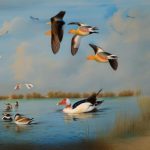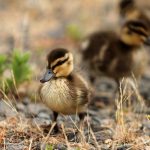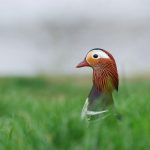Rare domestic duck breeds are a fascinating and often overlooked aspect of the poultry world. While many people are familiar with common duck breeds such as the Pekin or the Mallard, there are numerous lesser-known breeds that are equally deserving of attention. These rare breeds often have unique characteristics and features that set them apart from their more common counterparts, making them a valuable and interesting addition to any flock. In this article, we will explore the characteristics, history, conservation efforts, and challenges faced by rare domestic duck breeds, as well as provide tips on how to care for and raise these special birds.
Table of Contents
- 1 Characteristics and Features of Rare Domestic Duck Breeds
- 2 History and Origins of Rare Domestic Duck Breeds
- 3 Conservation Efforts for Rare Domestic Duck Breeds
- 4 Popular Rare Domestic Duck Breeds
- 5 Challenges and Threats Faced by Rare Domestic Duck Breeds
- 6 How to Care for and Raise Rare Domestic Duck Breeds
- 7 FAQs
Key Takeaways
- Rare domestic duck breeds are a unique and valuable part of our agricultural heritage, with distinct characteristics and features.
- These breeds have a rich history and origins, often dating back centuries and playing important roles in various cultures and traditions.
- Conservation efforts are crucial for preserving these rare breeds, as they face challenges and threats that put them at risk of extinction.
- Some popular rare domestic duck breeds include the Silver Appleyard, Saxony, and Ancona, each with its own unique traits and qualities.
- Proper care and raising of rare domestic duck breeds involves providing a suitable environment, balanced nutrition, and regular health monitoring to ensure their well-being and longevity.
Characteristics and Features of Rare Domestic Duck Breeds
Rare domestic duck breeds come in a wide variety of shapes, sizes, and colors, each with its own unique set of characteristics and features. Some rare breeds, such as the Silver Appleyard or the Saxony, are known for their striking plumage and vibrant colors. Others, like the Cayuga or the Swedish Blue, are prized for their iridescent black or blue-green feathers. In addition to their beautiful appearances, many rare duck breeds also possess desirable traits such as excellent egg-laying abilities, calm and friendly temperaments, and strong foraging instincts. For example, the Ancona duck is known for its prolific egg production, while the Welsh Harlequin is prized for its docile nature and adaptability to various climates. These unique characteristics make rare domestic duck breeds a valuable addition to any flock, whether for egg production, meat, or simply as charming and colorful additions to a backyard or farm.
History and Origins of Rare Domestic Duck Breeds
The history and origins of rare domestic duck breeds are as diverse and interesting as the breeds themselves. Many rare duck breeds have ancient origins, with some dating back hundreds or even thousands of years. For example, the Indian Runner duck is believed to have originated in Southeast Asia and has been bred for its upright posture and excellent egg-laying abilities for centuries. Other rare breeds, such as the Orpington or the Magpie, have more recent origins, with specific breeding programs developed in the 19th or 20th centuries to create ducks with specific traits or characteristics. The history of rare domestic duck breeds is often intertwined with the cultural and agricultural traditions of the regions where they originated, making them an important part of our shared agricultural heritage.
Conservation Efforts for Rare Domestic Duck Breeds
Conservation efforts for rare domestic duck breeds are crucial to ensure the continued existence and genetic diversity of these unique birds. Many rare duck breeds are at risk of extinction due to factors such as declining population numbers, loss of genetic diversity, and competition from more common commercial breeds. Organizations such as the Livestock Conservancy and Rare Breeds Survival Trust work tirelessly to raise awareness about rare duck breeds and implement breeding programs to preserve their genetic diversity. These efforts often involve maintaining breed registries, promoting responsible breeding practices, and educating the public about the value of preserving rare domestic duck breeds. By supporting these conservation efforts, individuals can play a vital role in ensuring that these special birds continue to thrive for future generations.
Popular Rare Domestic Duck Breeds
There are numerous rare domestic duck breeds that have gained popularity among poultry enthusiasts for their unique characteristics and features. One such breed is the Silver Appleyard, known for its striking silver and white plumage and excellent egg-laying abilities. Another popular rare breed is the Cayuga, prized for its iridescent black feathers that shimmer with shades of green and purple in the sunlight. The Saxony duck is also a favorite among breeders for its beautiful coloring and calm temperament. Other popular rare duck breeds include the Ancona, Welsh Harlequin, and Swedish Blue, each valued for their distinct traits and contributions to the diversity of domestic duck breeds. These popular rare breeds are sought after by poultry enthusiasts for their beauty, productivity, and unique personalities.
Challenges and Threats Faced by Rare Domestic Duck Breeds

Rare domestic duck breeds face a number of challenges and threats that put their continued existence at risk. One of the primary challenges is competition from more common commercial duck breeds that have been selectively bred for specific traits such as rapid growth or high egg production. This competition can lead to a loss of genetic diversity within rare breeds as well as a decline in population numbers. Additionally, habitat loss, predation, and disease can also pose significant threats to rare domestic duck breeds. Climate change and environmental degradation further exacerbate these challenges, making it increasingly difficult for rare breeds to thrive in their natural habitats. By understanding and addressing these challenges, we can work towards ensuring the long-term survival of these special birds.
How to Care for and Raise Rare Domestic Duck Breeds
Caring for and raising rare domestic duck breeds requires attention to their specific needs and characteristics. Providing a suitable living environment with access to clean water for swimming and foraging opportunities is essential for the health and well-being of rare duck breeds. Additionally, a balanced diet that includes a mix of commercial feed, fresh greens, and access to insects or other protein sources is important for maintaining optimal health and egg production. Proper housing that protects ducks from predators and extreme weather conditions is also crucial. When raising rare domestic duck breeds, it is important to prioritize genetic diversity and avoid inbreeding by carefully selecting breeding stock from diverse lineages. By following these guidelines and providing attentive care, individuals can contribute to the preservation and propagation of rare domestic duck breeds for future generations to enjoy.
In conclusion, rare domestic duck breeds are a valuable and often overlooked aspect of the poultry world. With their unique characteristics, diverse origins, and important conservation efforts, these special birds play a vital role in preserving genetic diversity and cultural heritage. By learning about the history, challenges, and care requirements of rare duck breeds, individuals can contribute to their preservation and ensure that they continue to thrive for generations to come. Whether for egg production, meat, or simply as charming additions to a backyard or farm, rare domestic duck breeds offer a wealth of benefits and opportunities for poultry enthusiasts to explore and appreciate.
If you’re interested in rare domestic duck breeds, you might also want to check out Poultry Wizard’s article on “What Vegetables Do Quails Eat?” Understanding the dietary needs of quails can provide valuable insights into the care and maintenance of various poultry breeds. Learn more about quail diets here.
FAQs
What are rare domestic duck breeds?
Rare domestic duck breeds are breeds of ducks that are not commonly found or raised by duck enthusiasts. These breeds may have unique physical characteristics, color patterns, or historical significance that sets them apart from more common duck breeds.
Why are rare domestic duck breeds important?
Rare domestic duck breeds are important for preserving genetic diversity within the duck population. By raising and breeding rare duck breeds, enthusiasts can help prevent the loss of unique genetic traits and characteristics that may be valuable for future breeding programs.
What are some examples of rare domestic duck breeds?
Examples of rare domestic duck breeds include the Silver Appleyard, Saxony, Swedish Blue, and Cayuga ducks. These breeds are not as widely seen as popular breeds like the Pekin or Mallard, but they have their own distinct qualities and characteristics.
How can rare domestic duck breeds be preserved?
Rare domestic duck breeds can be preserved through responsible breeding practices, education and awareness efforts, and support for conservation organizations that focus on rare duck breeds. By promoting the value of these breeds and encouraging their continued breeding and care, enthusiasts can help ensure their survival for future generations.
Where can I find rare domestic duck breeds?
Rare domestic duck breeds can often be found through specialty breeders, poultry shows and exhibitions, and online forums and communities dedicated to duck enthusiasts. It’s important to research and connect with reputable breeders who prioritize the health and well-being of their ducks.
Meet Walter, the feathered-friend fanatic of Florida! Nestled in the sunshine state, Walter struts through life with his feathered companions, clucking his way to happiness. With a coop that’s fancier than a five-star hotel, he’s the Don Juan of the chicken world. When he’s not teaching his hens to do the cha-cha, you’ll find him in a heated debate with his prized rooster, Sir Clucks-a-Lot. Walter’s poultry passion is no yolk; he’s the sunny-side-up guy you never knew you needed in your flock of friends!







